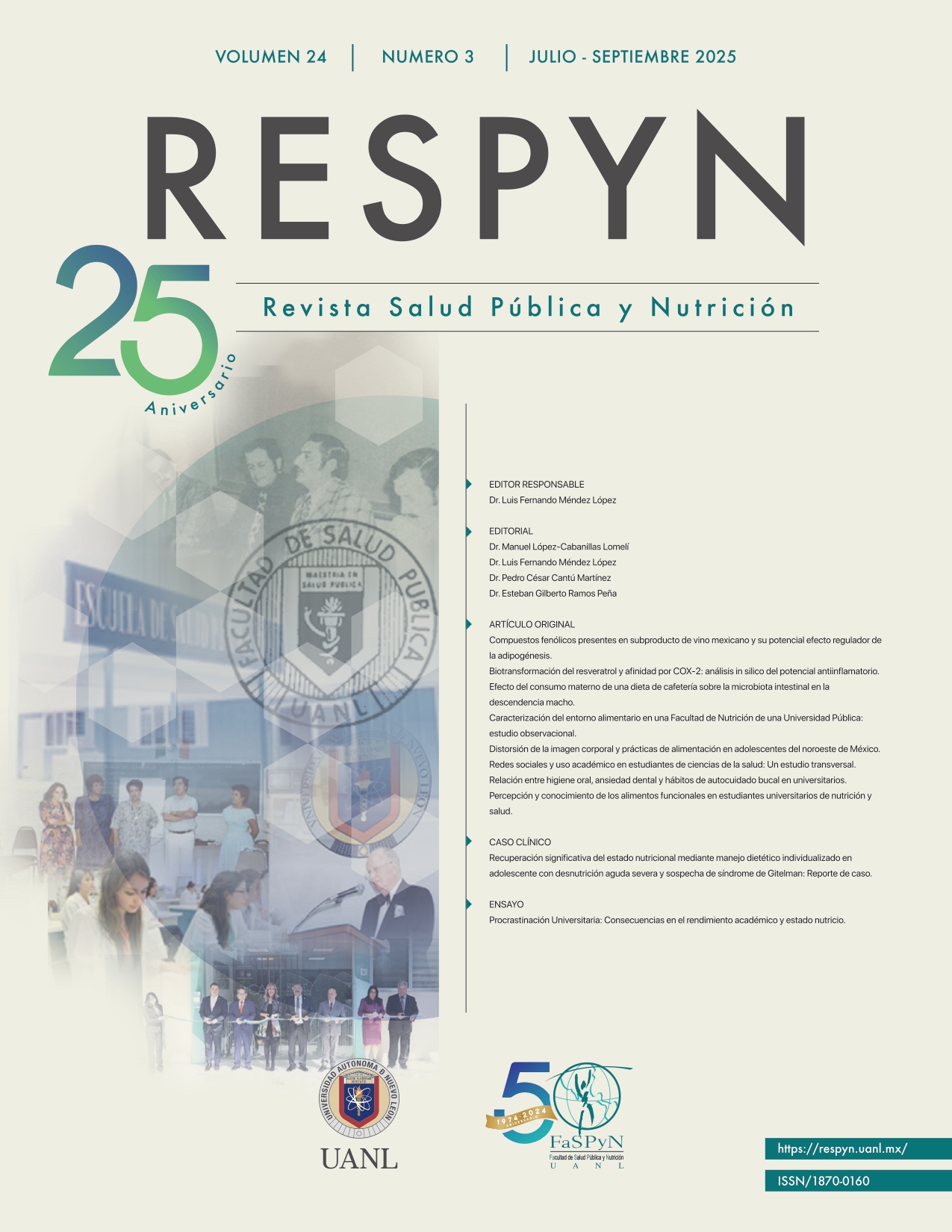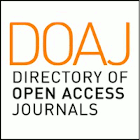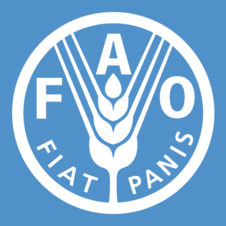Phenolic Compounds Present in Mexican Wine Byproducts and Their Potential Regulatory Effect on Adipogenesis
DOI:
https://doi.org/10.29105/respyn24.3-883Keywords:
Antioxidants, food and nutrition, FoodAbstract
Introduction: The pomace generated during Mexican winemaking is an underutilized source of antioxidant compounds with the potential to regulate the formation of fatty tissue. Objective: To evaluate the phenolic content and antioxidant activity of Tempranillo and Cabernet Sauvignon orujos from Chihuahua and to estimate, through a bioinformatics study, their interaction with the receptor activated by proliferators of gamma peroxisomes (PPARγ), key in adipogenesis. Material and method: Each pomace was dried, milled, and extracted to quantify total polyphenols and flavonoids, and the antioxidant capacity was measured. The components were identified by liquid chromatography coupled with mass spectrometry. Molecular docking with the receptor was modelled, and then the parameters of absorption, distribution, metabolism, and excretion were calculated. Results: Tempranillo presented more flavonoids and up to three times the antioxidant capacity of Cabernet. Quercetin, viniferin, and naringenin were detected; their binding energies (-10.0 to -7.0 kcal mol-1) exceeded or matched those of reference drugs, sharing critical binding residues. The bioavailability analysis indicated intestinal permeability. Conclusion: Tempranillo pomace is a sustainable ingredient rich in bioactive compounds that can interact favorably with the regulatory receptor of adipogenesis, supporting its potential use in dietary strategies against obesity.
Downloads
References
Ahmadian, M., Suh, J. M., Hah, N., Liddle, C., Atkins, A. R., Downes, M., & Evans, R. M. (2013). PPARγ signaling and metabolism: The good, the bad and the future. Nature Medicine, 19(5), Article 5. https://doi.org/10.1038/nm.3159 DOI: https://doi.org/10.1038/nm.3159
Aranaz, P., Navarro-Herrera, D., Zabala, M., Miguéliz, I., Romo-Hualde, A., López-Yoldi, M., Martínez, J. A., Vizmanos, J. L., Milagro, F. I., & González-Navarro, C. J. (2019). Phenolic Compounds Inhibit 3T3-L1 Adipogenesis Depending on the Stage of Differentiation and Their Binding Affinity to PPARγ. Molecules, 24(6). https://doi.org/10.3390/molecules24061045 DOI: https://doi.org/10.3390/molecules24061045
Barquera, S., Hernández-Barrera, L., Oviedo-Solís, C., Rodríguez-Ramírez, S., Monterrubio-Flores, E., Trejo-Valdivia, B., Martínez-Tapia, B., Aguilar-Salinas, C., Galván-Valencia, O., Chávez-Manzanera, E., Rivera-Dommarco, J., & Campos-Nonato, I. (2024). Obesidad en adultos. Salud Pública de México, 66(4, jul-ago), Article 4, jul-ago. https://doi.org/10.21149/15863 DOI: https://doi.org/10.21149/15863
Beltrán-Noboa, A., Proaño-Ojeda, J., Guevara, M., Gallo, B., Berrueta, L. A., Giampieri, F., Perez-Castillo, Y., Battino, M., Álvarez-Suarez, J. M., & Tejera, E. (2022). Metabolomic profile and computational analysis for the identification of the potential anti-inflammatory mechanisms of action of the traditional medicinal plants Ocimum basilicum and Ocimum tenuiflorum. Food and Chemical Toxicology, 164, 113039. https://doi.org/10.1016/j.fct.2022.113039 DOI: https://doi.org/10.1016/j.fct.2022.113039
Benzie, I. F. F., & Strain, J. J. (1996). The Ferric Reducing Ability of Plasma (FRAP) as a Measure of “Antioxidant Power”: The FRAP Assay. Analytical Biochemistry, 239(1), 70–76. https://doi.org/10.1006/abio.1996.0292 DOI: https://doi.org/10.1006/abio.1996.0292
Bondet, V., Brand-Williams, W., & Berset, C. (1997). Kinetics and Mechanisms of Antioxidant Activity using the DPPH.Free Radical Method. LWT - Food Science and Technology, 30(6), 609–615. https://doi.org/10.1006/fstl.1997.0240 DOI: https://doi.org/10.1006/fstl.1997.0240
Carullo, G., Ahmed, A., Fusi, F., Sciubba, F., Di Cocco, M. E., Restuccia, D., Spizzirri, U. G., Saponara, S., & Aiello, F. (2020). Vasorelaxant Effects Induced by Red Wine and Pomace Extracts of Magliocco Dolce cv. Pharmaceuticals (Basel, Switzerland), 13(5), 87. https://doi.org/10.3390/ph13050087 DOI: https://doi.org/10.3390/ph13050087
Carvalho, M. V. de, Gonçalves-de-Albuquerque, C. F., & Silva, A. R. (2021). PPAR Gamma: From Definition to Molecular Targets and Therapy of Lung Diseases. International Journal of Molecular Sciences, 22(2), Article 2. https://doi.org/10.3390/ijms22020805 DOI: https://doi.org/10.3390/ijms22020805
Castro-Palafox, J., Macías-Gallardo, F., & Ozuna, C. (2024). The culture of wine in Mexican gastronomy: Historical background, current context, and perspectives for the future. International Journal of Gastronomy and Food Science, 35, 100848. https://doi.org/10.1016/j.ijgfs.2023.100848 DOI: https://doi.org/10.1016/j.ijgfs.2023.100848
Feng, X.-Y., Ding, T.-T., Liu, Y.-Y., Xu, W.-R., & Cheng, X.-C. (2020). In-silico identification of peroxisome proliferator-activated receptor (PPAR)α/γ agonists from Ligand Expo Components database. Journal of Biomolecular Structure and Dynamics, 0(0), 1–12. https://doi.org/10.1080/07391102.2020.1745279 DOI: https://doi.org/10.1080/07391102.2020.1745279
Ferri, M., Bin, S., Vallini, V., Fava, F., Michelini, E., Roda, A., Minnucci, G., Bucchi, G., & Tassoni, A. (2016). Recovery of polyphenols from red grape pomace and assessment of their antioxidant and anti-cholesterol activities. New Biotechnology, 33(3), 338–344. https://doi.org/10.1016/j.nbt.2015.12.004 DOI: https://doi.org/10.1016/j.nbt.2015.12.004
Flamini, R., De Rosso, M., & Bavaresco, L. (2015). Study of Grape Polyphenols by Liquid Chromatography-High-Resolution Mass Spectrometry (UHPLC/QTOF) and Suspect Screening Analysis. Journal of Analytical Methods in Chemistry, 2015, 350259. https://doi.org/10.1155/2015/350259 DOI: https://doi.org/10.1155/2015/350259
Fuentes-Verduzco, C., Lugo-García, G. A., Pérez-Leal, R., Camacho-Inzunza, F. A., Fuentes-Verduzco, C., Lugo-García, G. A., Pérez-Leal, R., & Camacho-Inzunza, F. A. (2022). Calidad de vinos de la variedad tempranillo, cultivada en tres viñedos en Chihuahua, México. Estudios sociales. Revista de alimentación contemporánea y desarrollo regional, 32(59). https://doi.org/10.24836/es.v32i59.1195 DOI: https://doi.org/10.24836/es.v32i59.1195
Hithamani, G., & Srinivasan, K. (2014). Bioaccessibility of Polyphenols from Wheat (Triticum aestivum), Sorghum (Sorghum bicolor), Green Gram (Vigna radiata), and Chickpea (Cicer arietinum) as Influenced by Domestic Food Processing. Journal of Agricultural and Food Chemistry, 62(46), 11170–11179. https://doi.org/10.1021/jf503450u DOI: https://doi.org/10.1021/jf503450u
Khakpour, A., Ghiabi, S., Babaheydari, A. K., Mirahmadi, S. A., Baziyar, P., Heidari-Soureshjani, E., & Horestani, M. K. (2025). Discovering the therapeutic potential of Naringenin in diabetes related to GLUT-4 and its regulatory factors: A computational approach. Chemical Physics Impact, 10, 100784. https://doi.org/10.1016/j.chphi.2024.100784 DOI: https://doi.org/10.1016/j.chphi.2024.100784
López-Hernández, A. A., Ortega-Villarreal, A. S., Vázquez Rodríguez, J. A., López-Cabanillas Lomelí, M., & González-Martínez, B. E. (2022). Application of different cooking methods to improve nutritional quality of broccoli (Brassica oleracea var. Italica) regarding its compounds content with antioxidant activity. International Journal of Gastronomy and Food Science, 28, 100510. https://doi.org/10.1016/j.ijgfs.2022.100510 DOI: https://doi.org/10.1016/j.ijgfs.2022.100510
Ma, X., Wang, D., Zhao, W., & Xu, L. (2018). Deciphering the Roles of PPARγ in Adipocytes via Dynamic Change of Transcription Complex. Frontiers in Endocrinology, 9. https://doi.org/10.3389/fendo.2018.00473 DOI: https://doi.org/10.3389/fendo.2018.00473
Méndez-López, L. F., Sosa de León, D., López-Cabanillas Lomelí, M., González-Martínez, B. E., & Vázquez-Rodríguez, J. A. (2022). Phytochemicals From Vicia faba Beans as Ligands of the Aryl Hydrocarbon Receptor to Regulate Autoimmune Diseases. Frontiers in Nutrition, 9. https://www.frontiersin.org/article/10.3389/fnut.2022.790440 DOI: https://doi.org/10.3389/fnut.2022.790440
Muñoz-Bernal, Ó. A., Coria-Oliveros, A. J., de la Rosa, L. A., Rodrigo-García, J., del Rocío Martínez-Ruiz, N., Sayago-Ayerdi, S. G., & Alvarez-Parrilla, E. (2021). Cardioprotective effect of red wine and grape pomace. Food Research International, 140, 110069. https://doi.org/10.1016/j.foodres.2020.110069 DOI: https://doi.org/10.1016/j.foodres.2020.110069
Muñoz-Bernal, Ó. A., Coria-Oliveros, A. J., Vazquez-Flores, A. A., De La Rosa, L. A., Núñez-Gastélum, J. A., Rodrigo-García, J., Ayala-Zavala, J. F., & Alvarez-Parrilla, E. (2020). Evolution of Phenolic Content, Antioxidant Capacity and Phenolic Profile during Cold Pre-fermentative Maceration and Subsequent Fermentation of Cabernet Sauvignon Red Wine. South African Journal of Enology and Viticulture, 41(1). https://doi.org/10.21548/41-1-3778 DOI: https://doi.org/10.21548/41-1-3778
Nenadis, N., Wang, L.-F., Tsimidou, M., & Zhang, H.-Y. (2004). Estimation of Scavenging Activity of Phenolic Compounds Using the ABTS•+ Assay. Journal of Agricultural and Food Chemistry, 52(15), 4669–4674. https://doi.org/10.1021/jf0400056 DOI: https://doi.org/10.1021/jf0400056
Nocedo-Mena, D., Ríos, M. Y., Ramírez-Cisneros, M. Á., González-Maya, L., Sánchez-Carranza, J. N., & Camacho-Corona, M. del R. (2021). Metabolomic Profile and Cytotoxic Activity of Cissus incisa Leaves Extracts. Plants, 10(7), Article 7.
https://doi.org/10.3390/plants10071389 DOI: https://doi.org/10.3390/plants10071389
Pizaña Cisneros, R. I. (2023). EVALUACIÓN DE LA DIGESTIBILIDAD PROTEICA DE RESIDUOS DE CAFÉ Y EL POTENCIAL DE SUS PÉPTIDOS BIOACTIVOS PARA EL MANEJO DEL SÍNDROME METABÓLICO [Universidad Autónoma de Nuevo León]. http://eprints.uanl.mx/25256/1/1080328771.pdf#page=58.12
Razavi, S.-M., Gholamin, S., Eskandari, A., Mohsenian, N., Ghorbanihaghjo, A., Delazar, A., Rashtchizadeh, N., Keshtkar-Jahromi, M., & Argani, H. (2013). Red Grape Seed Extract Improves Lipid Profiles and Decreases Oxidized Low-Density Lipoprotein in Patients with Mild Hyperlipidemia. Journal of Medicinal Food, 16(3), 255–258. https://doi.org/10.1089/jmf.2012.2408 DOI: https://doi.org/10.1089/jmf.2012.2408
Ribeiro, T. P., Oliveira, A. C., Mendes-Junior, L. G., França, K. C., Nakao, L. S., Schini-Kerth, V. B., & Medeiros, I. A. (2016). Cardiovascular effects induced by northeastern Brazilian red wine: Role of nitric oxide and redox sensitive pathways. Journal of Functional Foods, 22, 82–92. https://doi.org/10.1016/j.jff.2015.12.032 DOI: https://doi.org/10.1016/j.jff.2015.12.032
Rodrigues, R. P., Gando-Ferreira, L. M., & Quina, M. J. (2022). Increasing Value of Winery Residues through Integrated Biorefinery Processes: A Review. Molecules, 27(15), Article 15. https://doi.org/10.3390/molecules27154709 DOI: https://doi.org/10.3390/molecules27154709
Rodriguez-Rodriguez, R., Justo, M. L., Claro, C. M., Vila, E., Parrado, J., Herrera, M. D., & Alvarez de Sotomayor, M. (2012). Endothelium-dependent vasodilator and antioxidant properties of a novel enzymatic extract of grape pomace from wine industrial waste. Food Chemistry, 135(3), 1044–1051. https://doi.org/10.1016/j.foodchem.2012.05.089 DOI: https://doi.org/10.1016/j.foodchem.2012.05.089
Shamah-Levy, T., Gaona-Pineda, E. B., Cuevas-Nasu, L., Valenzuela-Bravo, D. G., Morales-Ruan, C., Rodríguez-Ramírez, S., Méndez-Gómez-Humarán, I., Ávila-Arcos, M. A., Álvarez-Sánchez, C., Ávila-Curiel, A., Díaz-trejo, L. I., Espinosa-Galindo, A. F., Fajardo-Niquete, I., Perea-Martínez, A., Véjar-Rentería, L. S., & Villalpando-Carrión, S. (2024). Sobrepeso y obesidad en población escolar y adolescente. Salud Pública de México, 66(4, jul-ago), Article 4, jul-ago. https://doi.org/10.21149/15842 DOI: https://doi.org/10.21149/15842
Sosa De León, D., Méndez-López, L. F., González-Martínez, B. E., López-Cabanillas Lomelí, M., López-Hernández, A. A., Luna-Vital, D. A., Néder-Suárez, D., & Vázquez-Rodríguez, J. A. (2024). Bioaccessibility and potential bioactivity of fresh and mature fava bean flavonoids. Applied Food Research, 4(2), 100523.https://doi.org/10.1016/j.afres.2024.100523 DOI: https://doi.org/10.1016/j.afres.2024.100523
Taifouris, M., El-Halwagi, M., & Martin, M. (2023). Evaluation of the Economic, Environmental, and Social Impact of the Valorization of Grape Pomace from the Wine Industry. ACS Sustainable Chemistry & Engineering, 11(37), 13718–13728.
https://doi.org/10.1021/acssuschemeng.3c03615 DOI: https://doi.org/10.1021/acssuschemeng.3c03615
Urquiaga, I., D’Acuña, S., Pérez, D., Dicenta, S., Echeverría, G., Rigotti, A., & Leighton, F. (2015). Wine grape pomace flour improves blood pressure, fasting glucose and protein damage in humans: A randomized controlled trial. Biological Research, 48(1), 49. https://doi.org/10.1186/s40659-015-0040-9 DOI: https://doi.org/10.1186/s40659-015-0040-9
Downloads
Published
How to Cite
Issue
Section
License
Copyright (c) 2025 Edith Garicey Flores Luna , Blanca Edelia González Martínez, Manuel López-Cabanillas Lomelí , David Neder Suarez , Jesús Alberto Vázquez Rodríguez

This work is licensed under a Creative Commons Attribution 4.0 International License.
The rights of the work belong to the author or authors, however, by sending it for publication in the Public Health and Nutrition Magazine of the Faculty of Public Health and Nutrition of the Autonomous University of Nuevo León, they grant the right for its first publication in between electronic, and possibly, in print to the Public Health and Nutrition Magazine. The license used is the Creative Commons attribution, which allows third parties to use what is published whenever the authorship of the work is mentioned and the first publication that is in the Public Health and Nutrition Magazine. Likewise, the author or authors will take into account that it will not be allowed to send the publication to any other journal, regardless of the format. The authors will be able to make other independent and additional contractual agreements for the non-exclusive distribution of the version of the article published in the Public Health and Nutrition Magazine (e.g., institutional repository or publication in a book) provided they clearly state that The work was published for the first time in the Public Health Magazine, Magazine of the Faculty of Public Health and Nutrition of the Autonomous University of Nuevo León.














